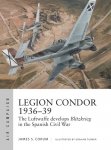-
Załączniki bezpieczeństwa
Załczniki do produktuZałączniki dotyczące bezpieczeństwa produktu zawierają informacje o opakowaniu produktu i mogą dostarczać kluczowych informacji dotyczących bezpieczeństwa konkretnego produktu
-
Informacje o producencie
Informacje o producencieInformacje dotyczące produktu obejmują adres i powiązane dane producenta produktu.Osprey Publishing
-
Osoba odpowiedzialna w UE
Osoba odpowiedzialna w UEPodmiot gospodarczy z siedzibą w UE zapewniający zgodność produktu z wymaganymi przepisami.
Author: Mark Stille
Illustrator: Jim Laurier
Publication Date: 29 Oct 2020
Number of Pages: 96
Japan's attack on Pearl Harbor in 1941 was quickly followed by a rapid invasion of Malaya, a plan based entirely on the decisive use of its airpower. While the British was inadequately prepared, they likewise relied on the RAF to defend their colony. The campaign was a short match between Japanese airpower at its peak and an outgunned colonial air force, and its results were stunning.
The subsequent Dutch East Indies campaign was even more dependent on airpower, with Japan having to seize a string of island airfields to support their leapfrog advance. Facing the Japanese was a mixed bag of Allied air units, including the Dutch East Indies Air Squadron and the US Far East Air Force. The RAF fell back to airfields on Sumatra in the last stages of the Malaya campaign, and was involved in the last stages of the campaign to defend the Dutch colony.
For the first time, this study explores these campaigns from an airpower perspective, explaining how and why the Japanese were so devastatingly effective.











